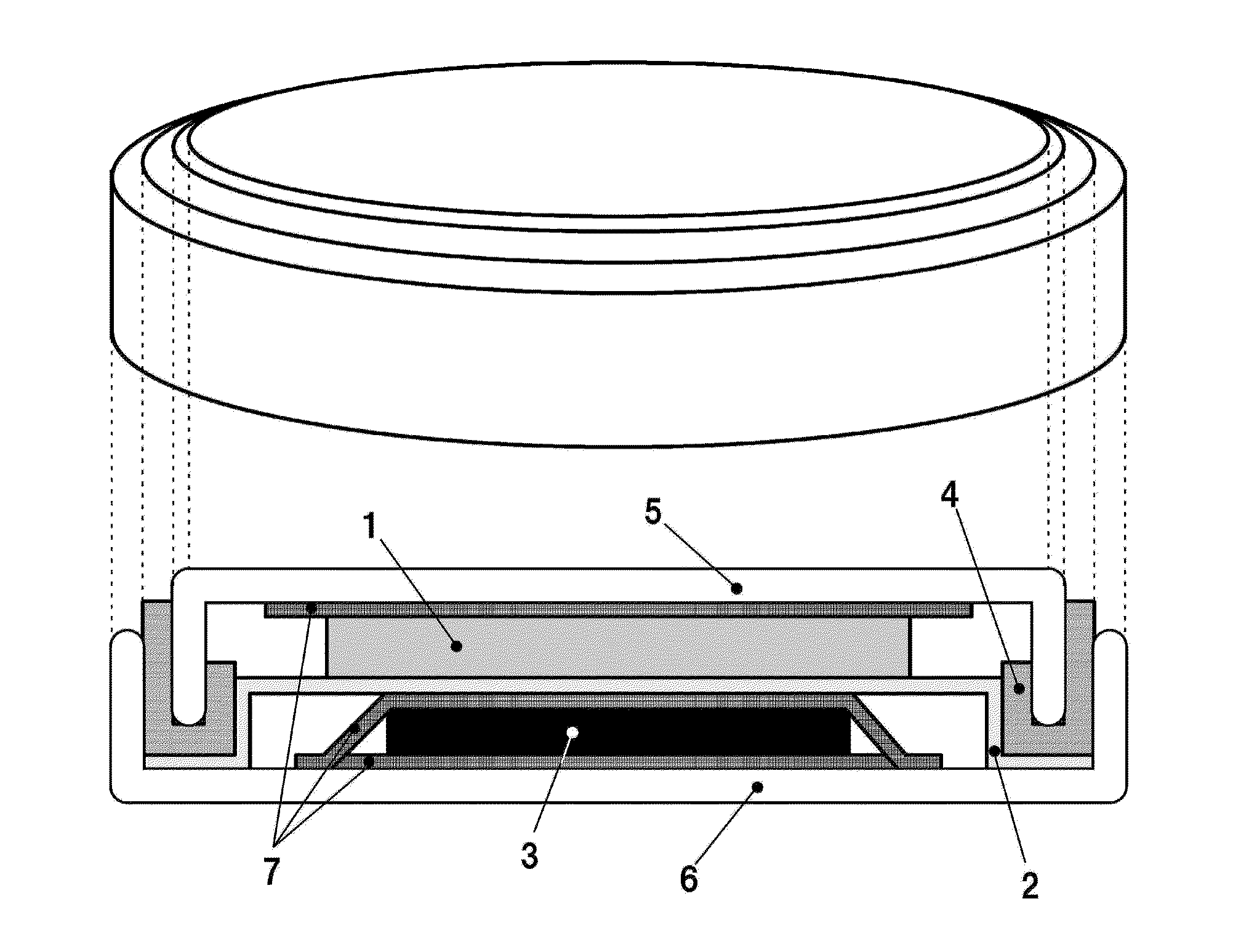Positive electrode active substance for nonaqueous electrolyte secondary cell, method for producing same, and nonaqueous electrolyte secondary cell using positive electrode active substance
a technology of nonaqueous electrolyte and active substance, which is applied in the direction of batteries, nickel compounds, cell components, etc., can solve the problems of increasing the cost of batteries, reducing the charge/discharge life, and difficulty in responding to the ever increasing requirements for lithium ion secondary batteries to meet the requirements of higher capacity, etc., to achieve excellent initial charge/discharge efficiency, low irreversible capacity, and high capacity
- Summary
- Abstract
- Description
- Claims
- Application Information
AI Technical Summary
Benefits of technology
Problems solved by technology
Method used
Image
Examples
example 1
[0124]In order to synthesize Li1.02Ni0.70Co0.30O2, in which 30 atom % of the Ni is substituted by Co, a mixed aqueous solution was obtained by dissolving a mixture of nickel sulfate and cobalt sulfate in pure water by a suitable method so as to provide a molar ratio between the nickel and cobalt of 70:30. Then, while this mixed aqueous solution was being stirred in a reaction tank with a stirring blade at 500 rpm and 50° C., a 25 mass % aqueous sodium hydroxide solution was added in order to adjust the pH value in the reaction tank to 12.6 and the salt concentration to 2.0 mol / L for the sum of the nickel salt and cobalt salt, and a nickel complex hydroxide given by Ni0.70Co0.30(OH)2 was obtained by coprecipitation. This complex hydroxide precipitate was filtered, washed with water and filtered, and dried in an air atmosphere.
[0125]Using an electric oven, this complex hydroxide was heat treated for 10 hours at 700° C. in an air atmosphere to obtain a nickel complex oxide in which nic...
example 2
[0134]A positive electrode active material was obtained and evaluated using the same methods as in Example 1, with the following exceptions: the mixed aqueous solution was obtained by dissolving nickel sulfate and cobalt sulfate so as to provide a nickel:cobalt molar ratio of 70:27; an aqueous solution in which sodium aluminate was dissolved and the mixed aqueous solution were simultaneously metered into the reaction tank so as to provide a nickel:cobalt:aluminum molar ratio of 70:27:3; the nickel complex oxide and lithium hydroxide monohydrate were mixed so as to provide an Li / Me ratio of 1.01; and 800° C. was used for the calcination temperature. The average particle diameter of the primary particles was 0.2 μm, and the average particle diameter (D50) of the secondary particles was 10.7 μm.
example 3
[0135]A positive electrode active material was obtained and evaluated using the same methods as in Example 1, with the following exceptions: the mixed aqueous solution was obtained by dissolving nickel sulfate and cobalt sulfate so as to provide a nickel:cobalt molar ratio of 67:30; an aqueous solution in which sodium aluminate was dissolved and the mixed aqueous solution were simultaneously metered into the reaction tank so as to provide a nickel:cobalt:aluminum molar ratio of 67:30:3; and the nickel complex oxide and lithium hydroxide monohydrate were mixed so as to provide an Li / Me ratio of 1.03. The average particle diameter of the primary particles was 0.2 μm, and the average particle diameter (D50) of the secondary particles was 10.6 μm.
PUM
| Property | Measurement | Unit |
|---|---|---|
| crystallite diameter | aaaaa | aaaaa |
| crystallite diameter | aaaaa | aaaaa |
| specific surface area | aaaaa | aaaaa |
Abstract
Description
Claims
Application Information
 Login to View More
Login to View More - R&D
- Intellectual Property
- Life Sciences
- Materials
- Tech Scout
- Unparalleled Data Quality
- Higher Quality Content
- 60% Fewer Hallucinations
Browse by: Latest US Patents, China's latest patents, Technical Efficacy Thesaurus, Application Domain, Technology Topic, Popular Technical Reports.
© 2025 PatSnap. All rights reserved.Legal|Privacy policy|Modern Slavery Act Transparency Statement|Sitemap|About US| Contact US: help@patsnap.com



